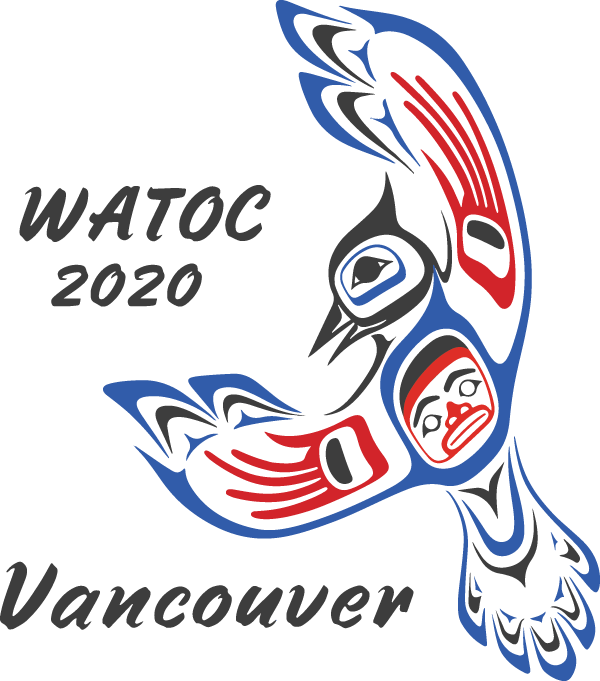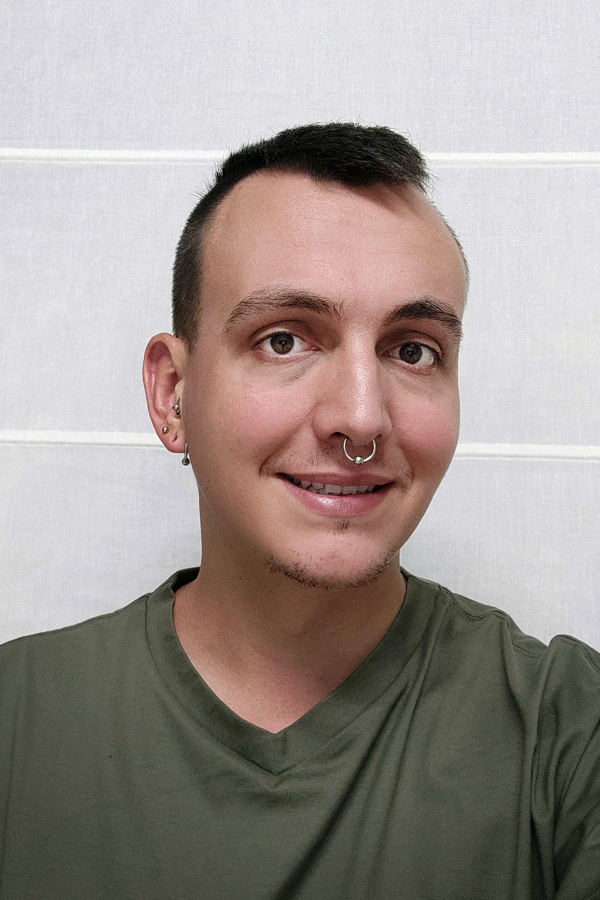
PeerJ Physical Chemistry is delighted to announce the first of our award winners from the 12th Triennial Congress of the World Association of Theoretical and Computational Chemists (WATOC 2020).
In total, ten PeerJ Awards were given to the best posters presented at WATOC 2020, as voted for by the attendees. We will be posting interviews with the other award winners over the coming weeks, but today we are focusing on our first two award winners: Iñigo Iribarren and Simone Gallarati.
*****
Free August at PeerJ Physical Chemistry!
A reminder that throughout August, submissions to PeerJ Physical Chemistry will receive a 100% APC waiver if ultimately published in the journal following peer review. See the announcement blog for details.

*****
Iñigo Iribarren Ph.D. candidate at Trinity College Dublin, Ireland.
 Can you tell us a bit about yourself and your research interests?
Can you tell us a bit about yourself and your research interests?
My research is focused on the computational design of asymmetric organocatalysts, aiming to make this process as efficient, fast and green as possible.
What first interested you in this field of research?
The first thing that interested me in this area of research was the challenge that chiral molecules represents. Chiral molecules always fascinated me because, they present the same bonding arrangement, but a different arrangement of atoms in space; however, surprisingly, their physical properties remain the same. But, since living organisms are not racemic, those enantiomers, pairs of stereoisomers which are mirror images of each other, interact differently with them.
This discrepancy between the racemic artificial production of molecules and the outstanding asymmetry of natural systems has always amazed me. Being capable of generating the desired enantiomer only has been, and still is, a huge challenge for synthetic chemists and different families of catalysts have been used in the past.
Organocatalysts have been the last ones to join the trend but are, nowadays, the most interesting ones due to: their lack of heavy harmful metals, their simplicity compared with enzymatic catalysts, the mild conditions in which they catalyse the reactions and their greener character in terms of residues produced.
Can you briefly explain the research you presented at WATOC?
The work that I published at WATOC is related to the very first step when a reaction is studied with a certain catalyst: the conformational analysis of the catalyst. Organocatalysts are usually extremely flexible molecules and the most stable conformer of those catalysts is frequently not obvious, or not the active conformer. Consequently, it is necessary to perform a conformational analysis of the catalyst to analyse its properties and accessibility to higher energy conformers.
Currently, there are several software available for this purpose in the market so, in this project, we rigorously analysed and compared the performance of the most commonly used software for achieving conformational analysis of asymmetric catalysts of the cinchona family, one of the most used and well-known within the organocatalysis field.
How will you continue to build on this research?
We hope this work can be used as a guide for everyone that wants to start a project with similar catalysts or for anyone working with big flexible organic molecules since we have determined the strengths of each method and have provided recommendations regarding suitable choices of methods for an analysis.
You can follow Iñigo on Twitter: @inigo_iribarren
Simone Gallarati PhD candidate at EPFL, Switzerland.
 Can you tell us a bit about yourself and your research interests?
Can you tell us a bit about yourself and your research interests?
I am originally from Italy; I did my undergraduate studies in Scotland before moving to Switzerland. I have a “traditional” chemistry background and was very fond of experimental and synthetic work before switching to computational chemistry. Now my research is focused on developing and extending the applicability of state-of-the-art computational methods to organocatalysis using innovative data-driven tools and concepts.
What first interested you in this field of research?
I think organocatalysis is an exciting – and challenging – filed to develop novel data-driven tools, from enantioselectivity prediction to closed-loop optimization pipelines. That is because it is still largely dominated by case-by-case studies and trial-and-error practices. This is likely going to change in the near future, as more sophisticated artificial intelligence-based strategies will be implemented and more diverse and systematic databases will be constructed in organic chemistry, revolutionizing the field of computer-assisted catalyst design.
Can you briefly explain the research you presented at WATOC?
I introduced OSCAR (Organic Structures for CAtalysis Repository), which offers a new route to build datasets up to 106 organocatalysts. In brief, these structures are automatically mined from the literature and crystallographic databases, or generated in a combinatorial fashion by combining molecular building blocks. The actual OSCAR dataset was built following a fragment-based strategy that leverages the under-exploited modular nature of organocatalysts. Overall, OSCAR represents the first steps towards an extensive mapping of organocatalyst space with large chemical diversity.
How will you continue to build on this research?
Using our fragment-based approach and the large combinatorial libraries in OSCAR, we aim to perform evolutionary experiments to find optimal catalysts for specific reactions. In general, we believe OSCAR will be valuable to the wider computational catalysis community to develop machine learning models for the prediction of organocatalyst performance and the optimization of reaction properties!

